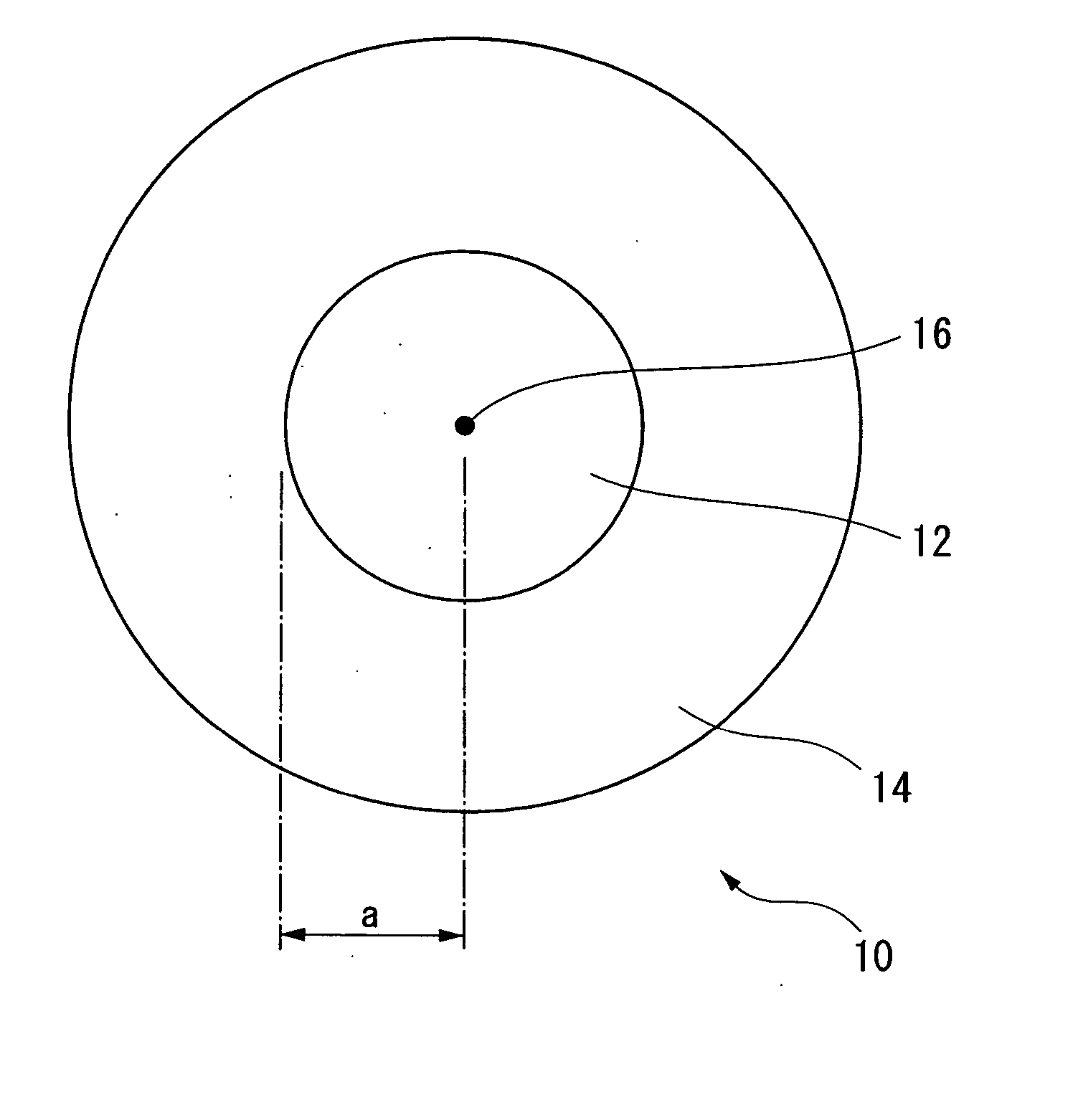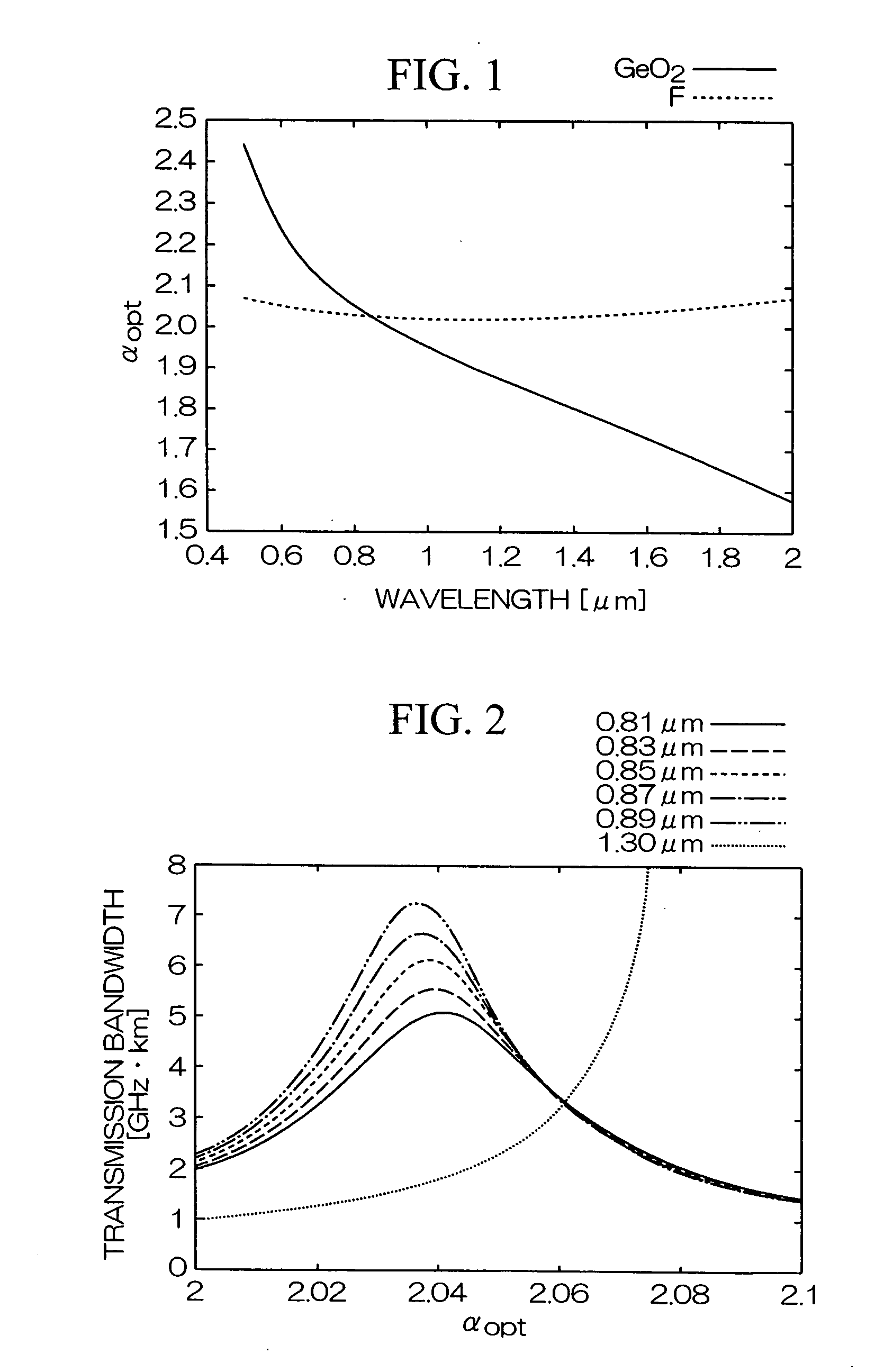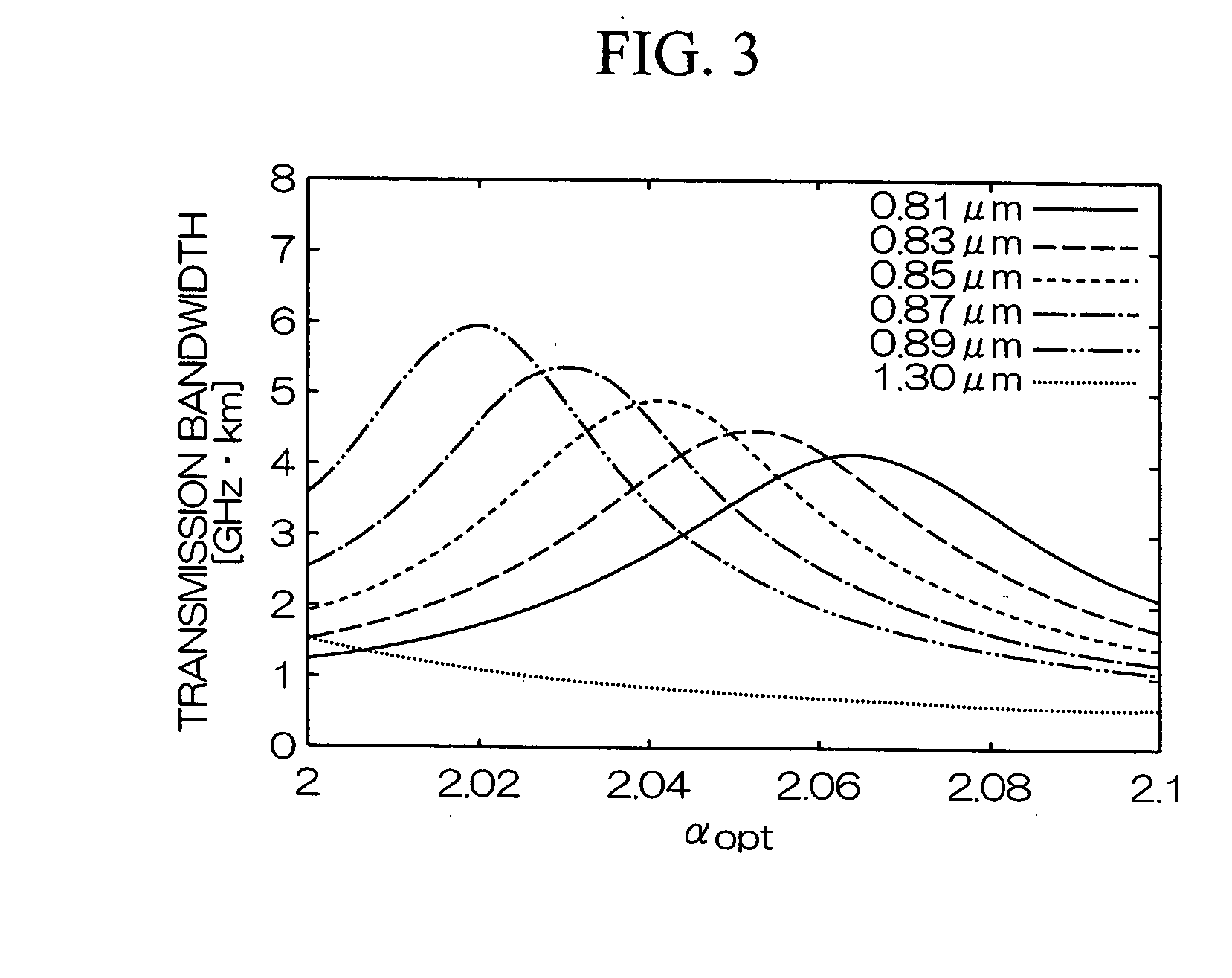Graded-index multimode fiber and manufacturing method therefor
a multi-mode fiber and index technology, applied in the field of gradedindex multi-mode fiber, can solve the problems that the performance improvement of gi multi-mode fiber seems almost impossible at present, and achieve the effect of widening the wavelength range and large transmission bandwidth
- Summary
- Abstract
- Description
- Claims
- Application Information
AI Technical Summary
Benefits of technology
Problems solved by technology
Method used
Image
Examples
first embodiment
the present invention will now be described in greater detail using examples. It is not intended, however, that the present invention be limited to the examples described.
example 1
GI multimode fibers 10, including a core 12 made of silica glass doped with fluorine of between 0 atom % and 2.8 atom % and a cladding 14 made of silica glass doped with 2.8 atom % fluorine concentrically surrounding the core 12, were fabricated.
The optimum value αopt of the refractive index profile exponential parameter α calculated using the WKB method in Formula (1), which represents the refractive index profile of the GI multimode fibers 10, was determined at various wavelengths to characterize the wavelength dependence. The result is shown in FIG. 1.
example 2
GI multimode fibers 10, including a core 12 made of silica glass doped with fluorine of between 0 atom % and 2.8 atom % and a cladding 14 made of silica glass doped with 2.8 atom % fluorine concentrically surrounding the core 12, were fabricated.
The relative refractive index difference Δ of the GI multimode fibers 10 with respect to the cladding 14 at the center of the core 16 was adjusted to 0.01, and the core radius “a” was set to 25 μm.
Transmission bandwidths and the optimum value αopt of the refractive index profile exponential parameter α, calculated using the WKB method in Formula (1), presenting the refractive index profiles of the GI multimode fibers 10, were determined to characterize the relationship between the transmission bandwidth and αopt. It is assumed that the pulse full width at half maximum (FWHM) of the incident light is 1 ns, the RMS (root mean square) spectrum is 0.35 nm, and the FWHM beam size of the incident light is 50 μm at wavelengths between 0.81 μm ...
PUM
| Property | Measurement | Unit |
|---|---|---|
| wavelengths | aaaaa | aaaaa |
| wavelengths | aaaaa | aaaaa |
| relative refractive index | aaaaa | aaaaa |
Abstract
Description
Claims
Application Information
 Login to View More
Login to View More - R&D
- Intellectual Property
- Life Sciences
- Materials
- Tech Scout
- Unparalleled Data Quality
- Higher Quality Content
- 60% Fewer Hallucinations
Browse by: Latest US Patents, China's latest patents, Technical Efficacy Thesaurus, Application Domain, Technology Topic, Popular Technical Reports.
© 2025 PatSnap. All rights reserved.Legal|Privacy policy|Modern Slavery Act Transparency Statement|Sitemap|About US| Contact US: help@patsnap.com



